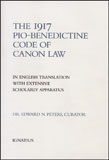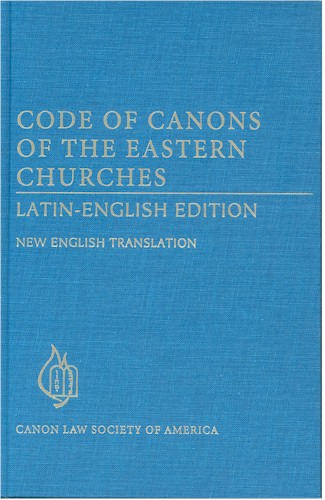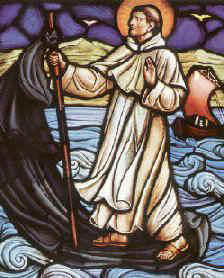| To work for the proper implementation of canon law is to play an extraordinarily constructive role in continuing the redemptive mission of Christ. Pope John Paul II |
|
|
|
| Resolution 1152 x 864 | Updated 12 jan 2013 | Review of George Weigel Letters to a Young Catholic (2004) and The Courage to be Catholic (2002) |
|
| Like so many excellent books written for young people, this one will not likely find its way into their hands unless older people put it there. Second only to having George Weigel live next door to you, this book is the best way to expose young Catholics to the erudition and common sense that Weigel has accumulated and wants to share with the next generation of believers. If you are a parent, teacher, or mentor of young Catholics (say, college age or a bit older), give this book to them, and read it with them. A chapter a week would work fine. Don’t worry if you haven’t (yet!) read each book Weigel discusses or seen every site he describes. Neither have I. His book, built on themes evoked by these great works, still serves marvelously. Tip: Don’t just lend a young person your copy of Letters. Buy one, and give one, to each youth on your list. They will want to revisit these pages as their own experience of life grows, and they will appreciate your thoughtfulness in making that easier for them over the years.
|
|
test | The Courage to be Catholic is an important book written by a true scholar and loving son of the Church. Finally, someone is saying what desperately needs to be said, and that someone is Dr. George Weigel, trusted in Rome, widely known in episcopal circles, and, to a significant degree, unassailable by those who would not want to hear what he has to say. Weigel, blessed with a truly Christian vision, sees good coming from the clergy sexual abuse scandal. The rest of us need to recognize what Weigel sees.
Briefly, Weigel’s book is the best overview of the American clergy sexual abuse debacle, the best analysis of the reasons behind the meltdown (primarily, he says, a failure of discipleship and leadership at every level), and the best summation of concrete proposals for repairing the damage, including reforms in the Vatican itself. I could end my review right here with “Just read it” and be content with that.
But, sharing his love for the Church and, if I may put it this way, paralleling without duplicating his learning, I’d like to suggest that Weigel’s analysis is light in three of the numerous areas he treated: namely, 1) the role of law (especially, canon law) in the Church; 2) the place of laity in diocesan bureaucracies; and 3) the influence of priests in diocesan affairs. If I can augment Weigel’s presentation in these three areas, I think his main criticisms (the failure of bishops to take real advice and to lead, and the failure of Rome to monitor and understand emerging crises overseas) can actually be argued more compellingly. There’s a lot of overlap in these three areas, but I’ll try to distinguish among them.
1. Weigel does not adequately describe the role of canon law in Church governance, and more specifically, he does not convey effectively that the failure to follow canon law for decades was in large part what got us into this mess. All of the conduct that resulted in “the Long Lent of 2002” was illegal under the 1917 and the 1983 Codes of Canon Law. I don’t know what else to say. If people are going to break the law, and other people with the responsibility to enforce the law, don’t do so, we see the failure not of law, but of those who are supposed to follow it. The difficulties of prosecuting clergy sexual abuse cases under the 1983 Code are real, but they are not insurmountable. Still, it’s very hard to improve a system that is not being used. The times are rapidly changing in this regard as appreciation that the neglect of canon law has caused real suffering, but until the system is back on its feet, let’s not dismiss it as irrelevant. Canon law has been around about ten times longer than American law. It will speak, and forcefully, to this crisis, as it has to a host of others in Church history.
2. Weigel paints diocesan bureaucracies, and especially the laity therein, with too broad a brush. It is my impression that lay diocesan staff were too seldom asked by bishops for their opinion on the treatment to be accorded offending priests. The wall around the clerical club that Weigel describes so well in many places was almost as impenetrable to lay diocesan staff as it was to lay outsiders. Frankly, I believe that lay staff would have taken a much harder line with offending clergy, and much sooner, than the ordained advisors to bishops seemed to push. More than one lay diocesan worker offered the observation that, “If I were so much as (credibly) accused of this stuff, I’d be fired immediately, while Fr. So-and-So is going to get an all-expense-paid vacation for a year to go think about his life’s direction.”
There are a distressing number of ill-trained, wrong-agenda-driven lay people working in diocesan chanceries, but I cannot agree that they necessarily represent the majority of lay staff, or that the same categories don’t apply just as well to priests in diocesan chanceries. There were priests on chancery staffs who regretted their bishops’ methods, but that didn’t change the fact that, with the possible exception of in-house civil lawyers, lay diocesan personnel, regardless of their qualifications, were not sufficiently consulted by bishops during the gathering clergy abuse storm. One episcopal advisor, venting frustration over a bishop’s unwillingness to listen to tough advice from his own staff, shared a technique for getting his opinion before the bishop: “I try to get the diocesan lawyers to put my advice into their words, then the bishop listens. But if it comes from me, forget it.” What prophet is accepted in his own building?
Weigel’s phrase, “the Long Lent of 2002”, has become part of ecclesiastical parlance. It should, it’s good. Lent recalls the Passion of the Lord. But the sorrowful mysteries don’t start with the second mystery underscored by Weigel, but rather with the first, the Agony in the Garden, wherein we ponder Christ’s prayers before His intense suffering under violent hands began. Our Lord’s knowing what was coming was its own form of suffering. It seems to me something similar can be said of at least some persons in or near diocesan administration who tried to blunt the ax before it hit. We should be wary of regarding them as some sort of unindicted co-conspirators (which is not what Weigel does, but such ideas are afloat out there.)
3. Weigel’s general criticisms of diocesan vocations offices seem sound until he scores bishops who appoint nuns “whose fidelity to the Church’s teaching on the nature of the priesthood is not altogether secure to head a diocesan vocations office. This must end. Priests must be responsible for vocations offices…” First, Weigel is no stranger to plain words, so why play around with phrases like “nuns whose fidelity to Church teaching is not secure” when what one means, I think, is “nuns who are heretics”. But in going after the easy (however deserving) target that Sr. Lala in a vocations office would represent, Weigel leaves a misimpression among readers about who actually ran most vocations offices during the disaster years, and therefore misses an opportunity to put more responsibility where it really belongs. Briefly, the pant-suited nun as vocations director does not square with my experience of vocations directors gathered over 15 years of diocesan work.
All of the vocations directors I knew or ever heard of were not nuns, but priests. All of them. None too scientifically, I pulled from the shelf a Kenedy Directory from a decade before the Long Lent and looked through the first couple of dozen diocesan entries. Every single vocations office was headed by a priest. Now, I don’t claim there were no nuns running vocations offices run from 1965 to 2002, and a few offices I checked listed women religious as assistants, but to single out women religious as representing what’s wrong with vocation offices is misleading. Indeed, I can think of several lay men and women religious whose education, integrity, orthodoxy, and maturity would make them excellent vocations directors, and why so many bishops still insist on finding the youngest priest in the diocese to head this important office still escapes me. In any event, if a contribution was made by vocations officers to the clergy sexual abuse crisis, such contribution would have been made by priests, not nuns. My suggestion actually strengthens Weigel’s main point, that the sexual abuse crisis represents more than anything else a multi-layered failure of discipleship among clerics.
Finally, some of Weigel’s best observations deal with Rome’s apparent inability to gather and assess, at least in a timely manner, information on overseas crises. I agree with everything he said. But I wonder if his analysis might not be pushed a bit further? Consider:
Weigel briefly alludes to an April 2002 luncheon between Pope John Paul II and three leading American cardinals (Bevilacqua of Philadelphia, Keeler of Baltimore, and McCarrick of Washington DC) just days before the scandal exploded, but at which little notice of the impending disaster was apparently conveyed to His Holiness by the American cardinals. Now it is interesting to think that all three princes of the American Church at the luncheon that day owed their rank, and even presence at the table, entirely to Pope John Paul II. Two of them (Bevilacqua and Keeler) were first made bishops by John Paul II, while all three had been moved to their major sees by him, and all three were created cardinals at his order. Bevilacqua in fact, by April 2002, was still in office some four years beyond normal episcopal retirement age by sufferance of the Holy Father. Frankly, I do not know whether these facts should increase my disappointment in the failure of American ecclesiastical leadership to warn the pope who had made them what they were, or my wonderment that the Vatican continues to place such heavy reliance on obviously wanting methods of monitoring churches overseas. Perhaps neither conclusion is warranted, but it is hard not to say that this kind of communications breakdown between men at the very highest levels in the Church leaves the rest of us, sinners that we are, in a weaker position to be the light to the world we are supposed to be.
I hope many people will take the time to read Weigel's excellent analysis of the American clergy sexual abuse scandal. He offers powerful words of encouragement and advice to those who in the coming years must step forward to repair the damage wrought by so many whose crimes and carelessness linger though they themselves have passed from the scene.
|






